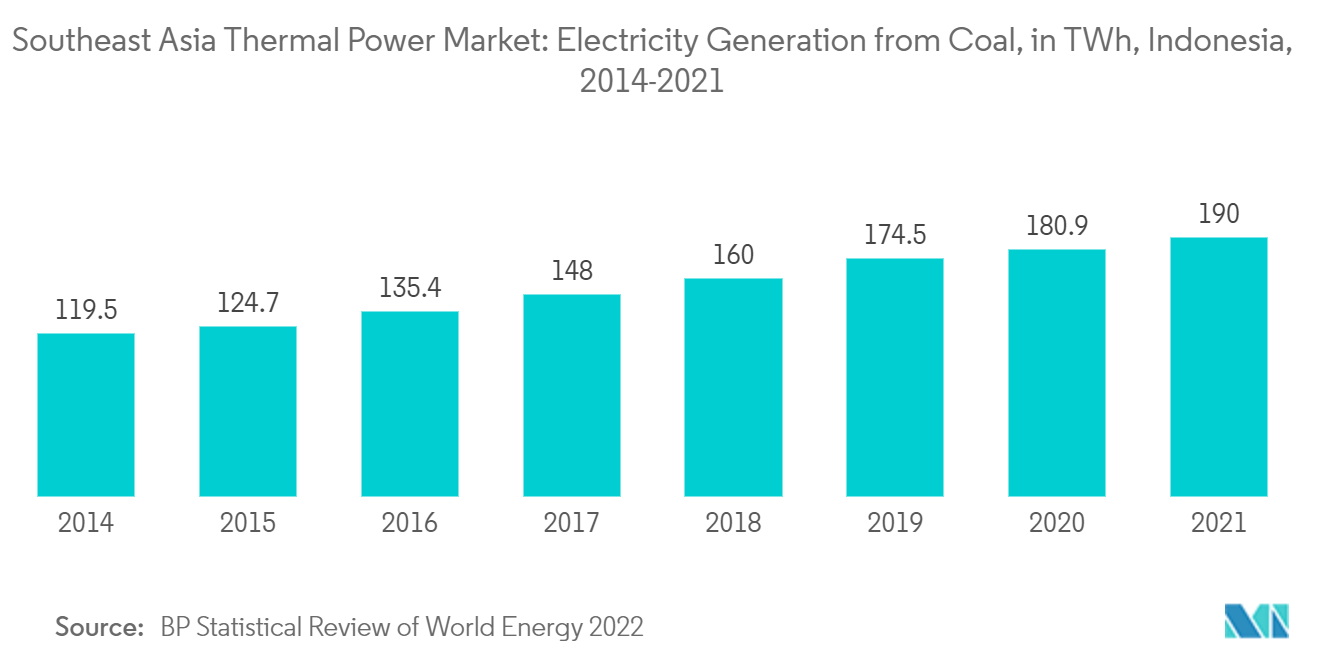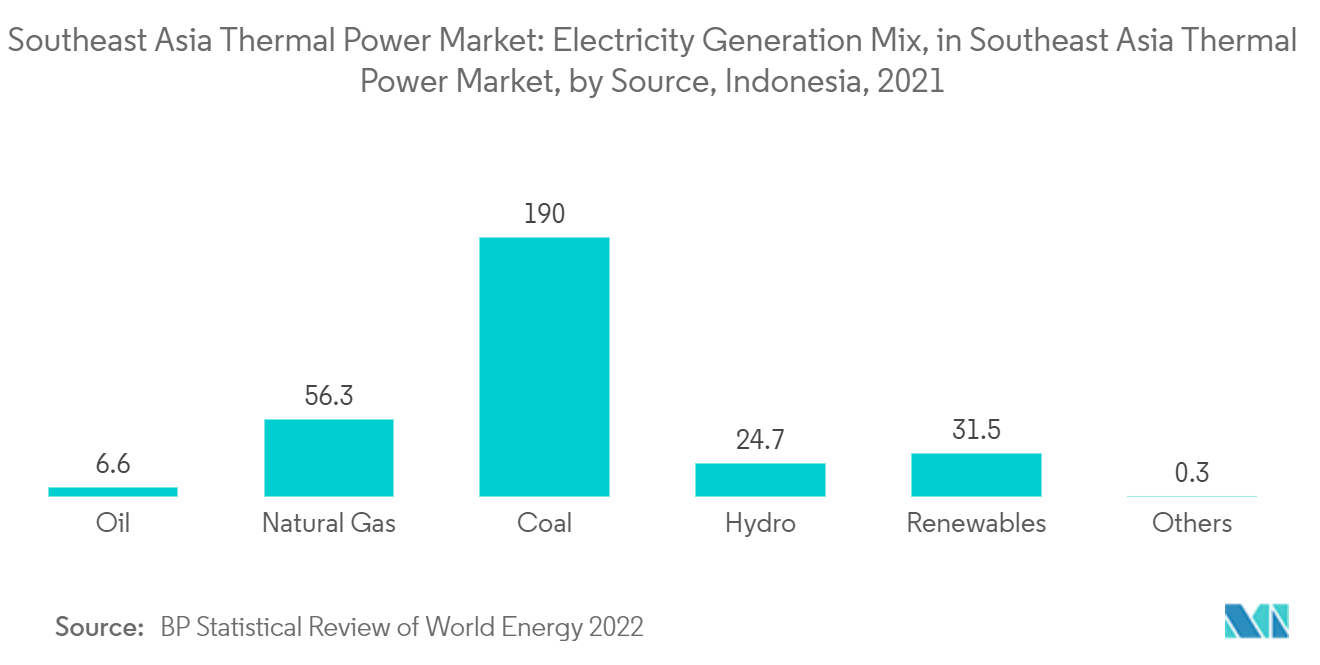Market Trends of Southeast Asia Thermal Power Industry
This section covers the major market trends shaping the Southeast Asia Thermal Power Market according to our research experts:
Coal-Based Thermal Power Plants to Dominate the Market
The rising power demand across different nations in Southeast Asia and the affordability of coal for power generation are resulting in the dominance of coal for power generation during the forecast period.
Indonesia is the leading market for the power sector. Despite its goals to increase the renewable share in electricity generation to 23% by 2025, the electricity generation from thermal energy, especially coal, is expected to increase due to ongoing and planned capacity expansion plans.
Countries like Vietnam, Thailand, and Indonesia are witnessing a continuous increase in electricity generation from coal. Indonesia produced 119.5TWh of electricity from coal in 2014, which rose to 190 TWh in 2021.
According to the IEA, coal's primary energy demand in Southeast Asia in the Stated Policies Scenario is expected to rise to 216 Mtoe in 2030 and 270 Mtoe in 2040.
The growth rate of coal-based thermal plants is decreasing due to environmental concerns and increasing interest in natural gas and renewable energy. However, the already operating plants and a few upcoming plants are expected to drive the coal thermal power market's growth.

Indonesia to Dominate the Market
Indonesia, the largest economy in Southeast Asia and an electricity sector, is highly dependent upon fossil fuels for electricity production, mainly lignite and bituminous coal. Although not the same as coal, natural gas is also expected to remain an integral part of the country's energy mix.
The country's electricity generation is heavily reliant on fossil fuels, mainly natural gas, followed by coal and oil. According to BP Statistical Review, in 2021, coal had a share of 61.4% in total electricity generation, followed by natural gas at 18.2%.
As of May 2021, the country has had an ongoing program since 2015 of adding around 35 GW of coal-fired power plants to its national grid. Added to 35 GW, there's a parallel program to add 7 GW of coal power projects to the grid. The high usage of coal for power generation has been mainly due to the country's high amount of coal reserves at 34.87 billion tons, the highest in Southeast Asia. In October 2021, Mitsubishi Power started commercial operations of a 500-megawatt natural gas turbine in Indonesia's Muara Karang Power Plant; thus, such projects are expected to drive the thermal power market.
Out of the various sources of generating conventional thermal power, most of the energy came from coal in 2021. Coal contributed approximately 66% to the traditional thermal power electricity generation, producing 190 terawatt-hours (TWh) of electricity in 2021.
With increasing power demand, power generation is also growing. Indonesia generated 310 TWh of electricity in 2021. The growing demand is in resulting in new projects, which are expected to drive the growth of the market studied during the forecast period.

